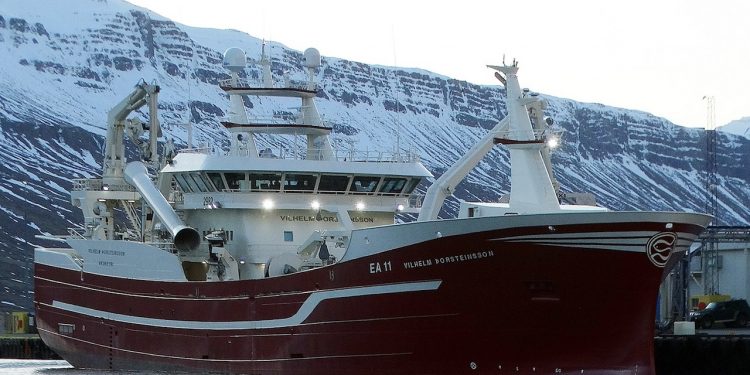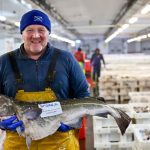As Iceland’s largest capelin season for many years comes to a close, the Icelandic fleet had around 700,000 tonnes at its disposal, although 200,000 tonnes were left uncaught as the fishery came to a end.
According to skipper Guðmundur Th. Jónsson of Samherji’s pelagic vessel Vilhelm Thorsteinsson, the later part of the season has been challenging.
‘I don’t recall seeing conditions like these before,’ he said.

‘There have been non-stop storms on the fishing grounds since fishing for capelin with purse seine gear started in February, with all the difficulties and problems that go with that,’ he said, adding that he also has his doubts about the accuracy of stock assessments.
‘I’m not sure that the initial surveys gave a realistic idea of the stock size. There was a lot of feed in the water when that survey was done, which could have resulted in the stock being assessed as being larger as the feed was believed to be capelin,’ he said.
‘I don’t have any single explanation for this, but I’m coming to the opinion that there could have been errors in the survey results.’
He commented that the state of the capelin has varied between areas towards the end of the season and the high-value roe fishery.
‘There wasn’t a lot of roe in the capelin caught in Faxaflói. The capelin can often be unpredictable and it hasn’t helped that whales have been getting in our way as the whale populations grown every year,’ he said.
‘But we’re satisfied as this big season comes to an end. We were optimistic to begin with, but that’s the way it goes. Nature is unpredictable and we don’t understand everything that’s going on, even though the technology has improved and the ships are better,’ Guðmundur Th. Jónsson said, adding that next is the blue whiting fishery.
Delivered just a year ago, Vilhelm Thorsteinsson has performed exceptionally well.
‘We have fished 75,000 tonnes in our first year, of which 30,000 tonnes have been capelin. The ship is excellent for the crew and all the equipment is first class. For Icelanders it’s very important to have an effective fishing fleet, which this capelin season has demonstrated.’









